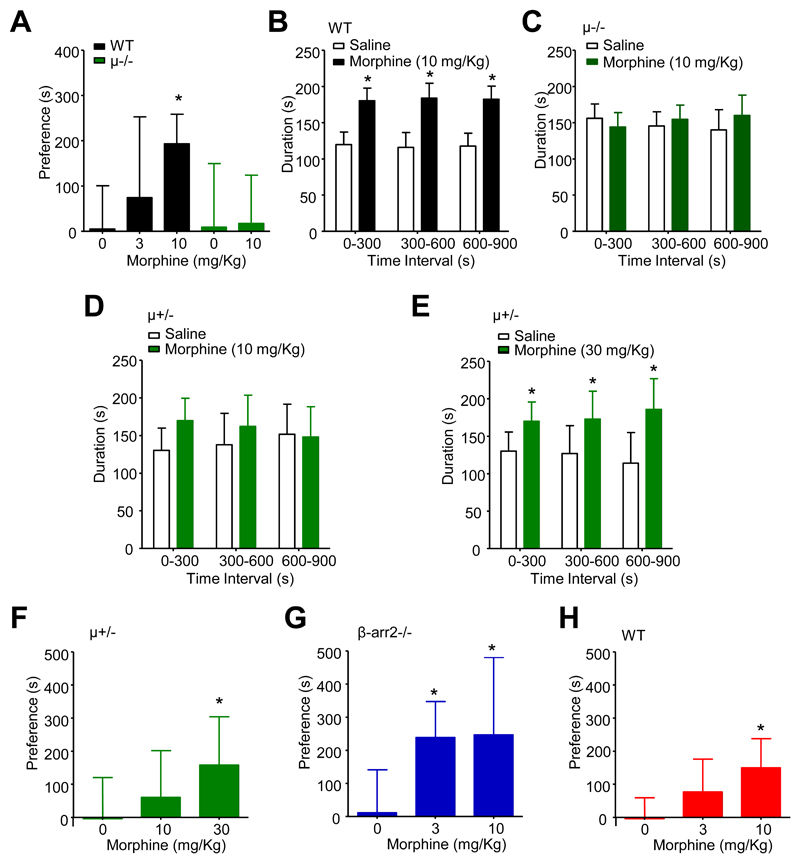Fig. 6.
Unlike the absence of β-arrestin2, which enhances reinforcement by morphine, dasatinib had no effect. (A) Morphine (3 and 10 mg/Kg s.c.) caused a dose-dependent preference of wild type mice (n = 8) for the paired environment (*p < 0.01, one-way ANOVA, post hoc Dunnett’s test). Morphine preference was lacking in μ-/- mice (n = 7). (B) Following conditioning, the duration of occupancy of the morphine-paired environment increased significantly compared to the saline-paired environment in wild type mice at all three 5 min intervals (*p < 0.0001, two-way ANOVA, post hoc Bonferroni test; n = 8). (C) μ-/- mice (n = 7) exhibited no morphine conditioned place preference at any stage during the 15 min test period. (D) μ+/- mice (n = 8) also exhibited no morphine (10 mg/Kg) conditioned place preference. (E) By contrast, μ+/- mice (n = 8) exhibited conditioned place preference to a higher dose of morphine (30 mg/Kg) (*p < 0.05 for 300-600 s, p < 0.001 for 600-900 s, two-way ANOVA, post hoc Bonferroni test). (F) Morphine (10 and 30 mg/Kg) caused a dose-dependent preference of μ+/- mice (n = 8) for the paired environment (*p < 0.05, one way ANOVA, post hoc Dunnett’s test). (G) Morphine preference occurred at a lower dose in β-arr2-/- mice (*p < 0.01, one way ANOVA, post hoc Dunnett’s test; n = 8). (H) By contrast, dasatinib had no effect morphine preference (*p < 0.01, one way ANOVA, post hoc Dunnett’s test; n = 8).

